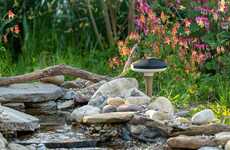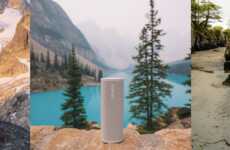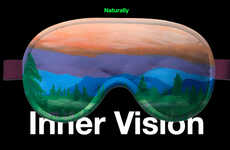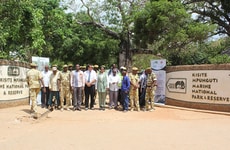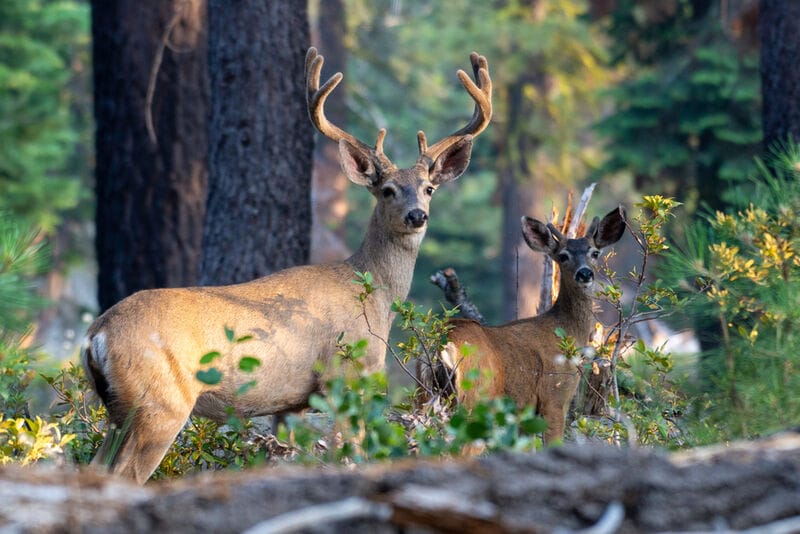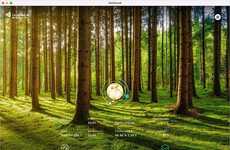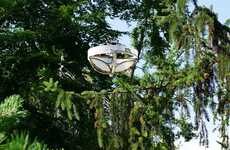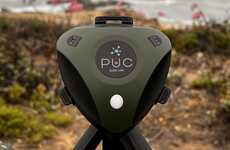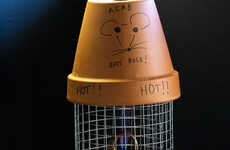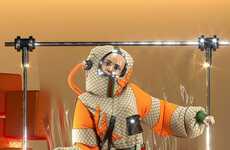
Soundscapes to Landscapes Monitors Wildlife with Sound Data
Colin Smith — August 22, 2022 — Social Good
References: soundscapes2landscapes.org & fastcompany
'Soundscapes to Landscapes' is a new collaborative initiative run by the Sonoma State University and based in California. The University's partners include 'Point Blue Conservation,' private landowners across the country, and other smaller non-government organizations.
Soundscapes to Landscapes leverages bioaccoustic technology, meaning it aims to document, track, and learn about wildlife across the country through processing audio recordings. Currently, Soundscapes to Landscapes has established more than 1,300 audio recorders across California, not counting those privately set up by landowners.
This audio is then amassed and processed through an artificial intelligence that sorts out what each sound in the recordings are. This is helpful as the human margin of error for audio processing is quite large, with some scientists mistaking artificial noises, such as a distant motorbike, for animal noises in the past.
After processing and decoding the audio data, the organizations involved in Soundscapes to Landscapes aim to learn more about the species that live in California. As the audio recording process is unintrusive to the natural state of animals, this is an effective way to record the natural states of wildlife.
Image Credit: Shutterstock
Soundscapes to Landscapes leverages bioaccoustic technology, meaning it aims to document, track, and learn about wildlife across the country through processing audio recordings. Currently, Soundscapes to Landscapes has established more than 1,300 audio recorders across California, not counting those privately set up by landowners.
This audio is then amassed and processed through an artificial intelligence that sorts out what each sound in the recordings are. This is helpful as the human margin of error for audio processing is quite large, with some scientists mistaking artificial noises, such as a distant motorbike, for animal noises in the past.
After processing and decoding the audio data, the organizations involved in Soundscapes to Landscapes aim to learn more about the species that live in California. As the audio recording process is unintrusive to the natural state of animals, this is an effective way to record the natural states of wildlife.
Image Credit: Shutterstock
Trend Themes
1. Bioaccoustic Monitoring - The growing use of AI-powered bioaccoustic monitoring solutions presents an opportunity for disruptive innovation in the field of wildlife conservation and environmental monitoring.
2. AI-driven Data Processing - The use of AI-driven data processing offers significant disruptive innovation opportunities for the development of more accurate and efficient wildlife monitoring solutions.
3. Unintrusive Monitoring - The trend towards unintrusive monitoring presents an opportunity for disruptive innovation in the development of effective and sustainable ways of monitoring wildlife populations.
Industry Implications
1. Environmental Monitoring - The use of bioaccoustic monitoring and AI-driven data processing can revolutionize environmental monitoring across industries such as agriculture, forestry, and mining.
2. Wildlife Conservation - AI-powered bioaccoustic monitoring and unintrusive recording can significantly aid the work of wildlife conservation organizations by providing more accurate data on wildlife populations and habitats.
3. Acoustic Engineering - The increasing use of bioaccoustic technology presents an opportunity for disruptive innovation in the field of acoustic engineering in areas such as noise reduction and analysis.
4.8
Score
Popularity
Activity
Freshness


